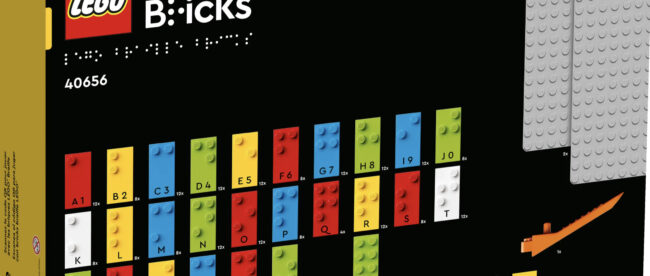LEGO Braille Bricks: Building a Brighter, More Inclusive Future for Learning!
LEGO recently launched Braille Bricks, an innovative educational product aimed at helping blind and visually impaired children learn Braille. These specialized LEGO bricks are part of a broader educational initiative that seeks to make the process of learning Braille more engaging and accessible.
Each LEGO Braille Brick is designed with both a Braille letter or character on one side and a standard LEGO stud on the other. This unique combination allows blind and visually impaired children to participate in constructive play while simultaneously acquiring essential Braille literacy skills. The tactile aspect of these bricks makes it easier for kids to comprehend and remember the Braille alphabet.
These LEGO Braille Bricks have been meticulously developed in collaboration with educators and organizations that specialize in working with blind and visually impaired children. The sets include a diverse array of Braille characters, numbers, and symbols, providing children with the tools they need to learn and practice Braille in an interactive and enjoyable manner.
The LEGO Braille Bricks retail at $89.99 and are available in two languages: English and French, and can be ordered online from LEGO’s website.
The introduction of LEGO Braille Bricks underscores LEGO’s commitment to inclusivity and its dedication to providing educational opportunities for all children, regardless of their abilities or challenges. This creative and practical tool not only assists blind and visually impaired children in developing vital literacy skills but also allows them to experience the joys of playing with LEGO toys, fostering creativity and social interaction. It serves as significant steps towards a more inclusive and accessible learning environment for children with visual impairments, some of which are highlighted below.
Commitment To Accessibility And Inclusion
Accessibility for All
LEGO’s introduction of Braille Bricks demonstrates a commitment to accessibility for all children, including those with visual impairments. By creating products specifically designed to assist blind and visually impaired children in learning Braille, LEGO is making a meaningful effort to break down barriers to education and play.
Inclusive Learning
LEGO Braille Bricks blend play with education, making it possible for children with and without visual impairments to engage together. This inclusion allows all children to learn about Braille and fosters a sense of community among diverse groups of children.
Universal Design
The concept of universal design is evident in the LEGO Braille Bricks. By combining Braille characters with traditional LEGO studs, these bricks are versatile and can be used by children of all abilities. This universal design principle ensures that a single product can serve the needs of a wide range of users.
Collaboration and Expertise
The development of LEGO Braille Bricks involved collaboration with educators and organizations specializing in working with blind and visually impaired children. This collaboration underscores the importance of consulting with experts and stakeholders to create products that genuinely address the unique needs of the target audience.
Promoting Literacy and Social Interaction
This initiative highlights the dual purpose of LEGO Braille Bricks in promoting literacy skills through Braille learning while encouraging social interaction through play. This aligns with the broader goal of helping children with visual impairments develop essential life skills while fostering inclusion and social connections.
Definitely hit the source link to learn more about LEGO Braille Bricks.
Source: LEGO
Still here? Learn more about how LEGO Braille Bricks help visually impaired students learn Braille by watching the short documentary below.


Leave a comment